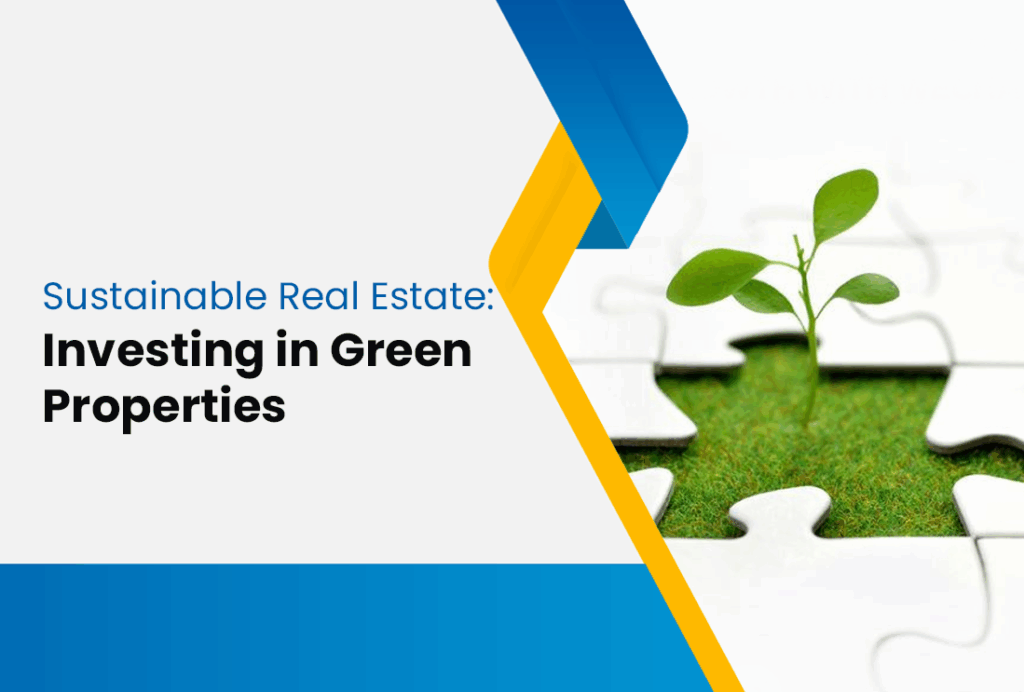Introduction
Sustainable real estate describes a direction of property investment where financial performance remains connected with social responsibility and investors are increasingly aware that buildings influence not only personal wealth but also collective health. People often feel more satisfied when their financial choices support environmental protection and this sense of satisfaction builds trust in markets. At Seedfinserve the view remains that sustainable real estate combines steady growth with long term community benefits and therefore investing in such properties brings a sense of balance where profit, comfort and responsibility move together in one path.
1. What Is Green Real Estate Investing
Green real estate investing describes ownership or development of buildings designed to reduce environmental stress and these projects often use modern technology and construction practices that minimise resource use. Energy saving systems such as solar panels, efficient heating, natural ventilation and advanced lighting reduce dependence on electricity grids while lowering household expenses. Water preservation techniques such as rainwater harvesting, low flow fixtures and greywater recycling bring stability in areas where resources remain under pressure and people living inside such homes find daily routines easier and less wasteful. Building materials also make a difference because recycled steel natural wood or finishes without chemicals provide healthier indoor conditions while giving durability and strength. Certification programmes like LEED IGBC or Energy Star validate environmental performance and this recognition builds trust among buyers, tenants and investors who prefer reliable indicators when choosing property.
2. Compelling Real-life Benefits for Investors
a. Lower Operating and Maintenance Costs
Properties with energy efficient systems and water saving technology can reduce expenses for both owners and tenants and the reduction continues every year as bills remain lower compared with traditional construction overall. Savings in operating costs directly influence the financial return and lower maintenance requirements add stability because well designed systems often last longer with fewer breakdowns which creates relief for different property owners.
b. Attractive Financial Upsides
Sustainable properties often receive higher valuations during sale because buyers prefer buildings with lower bills, healthier environments as well as official recognition of energy efficiency and these preferences translate into stronger prices. Tenants also show willingness to rent spaces that improve comfort and occupancy levels remain steady because fewer people move out and for investors this means faster transactions, reduced vacancy and greater rental yield which together create an attractive financial position.
c. Tax Incentives and Rebates
Many governments support sustainable construction through financial relief and such relief includes tax deductions, subsidies for renewable energy installations or rebates for efficient materials and these measures reduce the pressure of initial investment. The availability of financial assistance shortens the payback period and investors experience a smoother recovery of capital while enjoying recognition as contributors to environmental protection.
d. Health Well being and Market Demand
Indoor environments created by green properties improve human comfort because natural light, clean ventilation and safe finishes reduce illness and fatigue and this increases satisfaction among residents. Families value such homes for raising children in healthier surroundings and businesses appreciate offices that improve staff productivity so demand remains consistent across both residential and commercial segments. Steady demand strengthens property values and investors find confidence when they see rising interest from a wide range of buyers and tenants.
e. Retrofitting Wins: A Case Study
Existing properties can also be redesigned with modern systems that save energy and these changes require less financial commitment than constructing new buildings while still providing significant reductions in bills, for example, a commercial tower that introduced efficient cooling, smart monitoring and upgraded lighting recorded large savings in monthly expenses and the entire investment was recovered within a short time. Retrofitting therefore demonstrates that even older buildings can join sustainable growth and investors can find value without starting from new construction.
3. Real World Examples and Growth in India
India demonstrates wide progress in sustainable building because thousands of projects across cities carry certification today covering millions of square feet in both residential and office space and these projects display measurable savings in electricity and water. In Rajasthan alone hundreds of certified buildings operate with reduced environmental impact and investors in such projects recover costs quickly because premiums above conventional construction remain low while savings remain high. With government encouragement and private participation the number of certified projects continues to grow and the movement spreads from large metropolitan areas to smaller towns as well.
4. Challenges to Consider
| Challenge | Insight |
| Higher Upfront Costs | Construction or retrofitting requires more spending than conventional projects but the additional cost becomes justified by lower bills and stronger resale value over time which balances the financial picture. |
| Skilled Workforce Shortage | Expertise in sustainable design is sometimes limited and this shortage delays progress while raising fees for professionals with suitable knowledge making projects slightly more expensive. |
| Complexity of the Regulatory | Rules on certification tax benefits as well as building codes differ across regions and investors need to study local regulations carefully because confusion about requirements may delay approvals or reduce expected benefits. |
5. Best Practices for Investors
Investors should begin by setting clear objectives since some prefer to purchase newly constructed sustainable properties while others focus on upgrading older buildings with efficient technology and clarity at the beginning prevents confusion later. Recognized certification creates confidence in markets and investors should plan for such recognition during design or renovation. Experienced architects, developers and engineers with sustainable knowledge provide additional support and their involvement helps deliver reliable results in less time with fewer errors.
Learn more about property choices: Commercial vs Residential Real Estate – Which Is Better for You?
Conclusion
Sustainable real estate provides strong economic rewards, healthier environments and responsible use of natural resources and these outcomes together create trust between investors and communities. At Seedfinserve our view remains clear that investing in sustainable properties combines long term financial strength with social responsibility and such investments contribute to progress that benefits both present and future generations. We are committed to supporting investors who wish to combine financial growth with environmental care and our expert experience team stands ready to guide every step toward properties that balance performance with responsibility.

